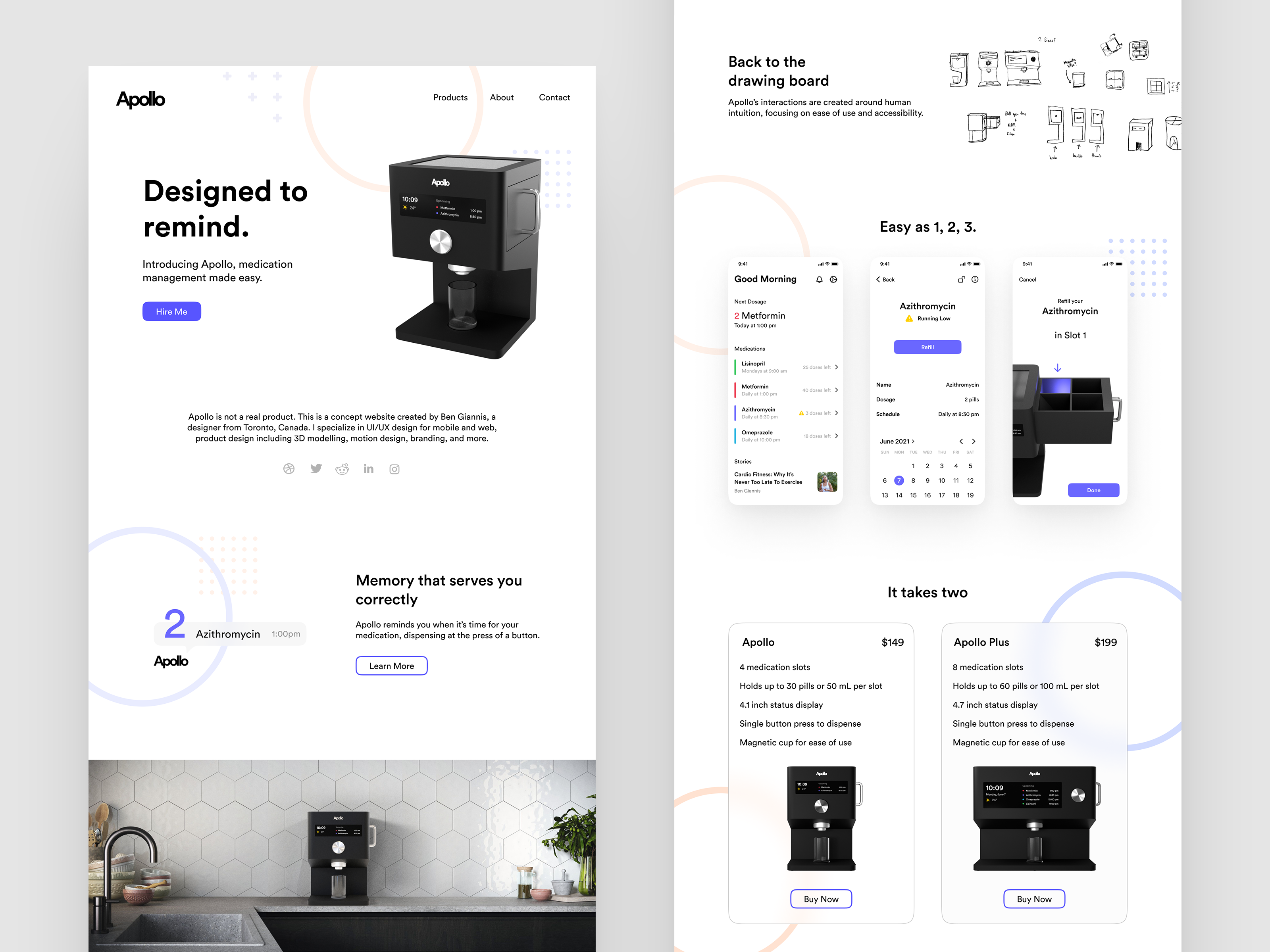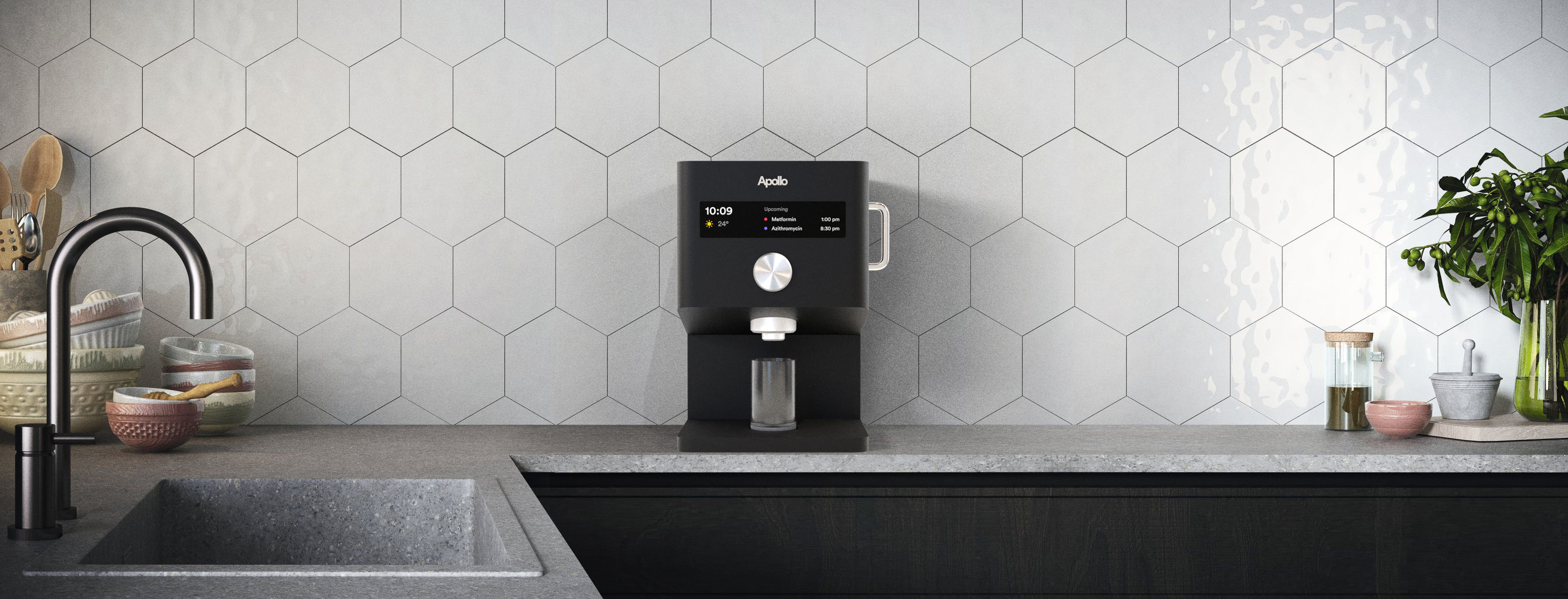Taking medication is a critical part of many people’s everyday lives, so why is it so complicated? The existing solution is to separate—by hand—correct medication doses into a tray labelled with days of the week. This solution is not just time consuming, it’s also a serious challenge for most older adults and disabled individuals.
Apollo aims to solve that.
This product was designed to make medication management as easy as it can be, reminding you when it’s time for your medication. Its interactions are centered around human intuition, focusing on ease of use and accessibility. It even reminds you to visit the pharmacy when you’re running low. Apollo takes a once tiresome task and automates it, with just the press of a button.
Back to the Drawing Board
The path to this product was not a straight one. It's the result of many months of research, culminating in a design that performs its job beautifully: managing medication.
Let's go back to the beginning.
As we get older, it becomes harder to remember important information. This is a critical issue when it comes to medication. It can become a burden to keep track of doses, especially when multiple medications are involved. I decided to design an interactive product to alert older adults or those that struggle with memory when it’s time to take each medication, as well as when to visit the pharmacy for medication refills.
Initial ideas involved a smartwatch-like device to alert users. At a predefined time, the watch would notify the user with the correct name and dosage. It even included a coloured LED as a secondary design hint. My original idea was to include coloured stickers to place on each medication bottle so the user could match colours instead of reading small text.
This quickly created a range of new problems though. Stickers, elastic bands, etc. could cover critical information on medicine bottles, making a hard task even harder. And it still didn't solve the issue of dealing with too many medication bottles.
Revise and Restart
Using standard medication bottles had issues as well. They aren't exactly smart, so there's no way the product could verify if the user actually took their prescribed dosage. I thought about designing an attachment that could detect when a medicine bottle was picked up, but this still seemed like more of a bandaid than a real fix. I needed something to reduce clutter, not add unnecessary steps.
In need of a more direct solution, I thought more about the core issue I was trying to solve. How could I automate a medication dose with little to no interaction from the user?
The solution was a smart medication dispenser that notifies the user and releases the correct dosage at the press of a button. This product would address all aforementioned issues at once—eliminating unnecessary processes and focusing on the user experience.
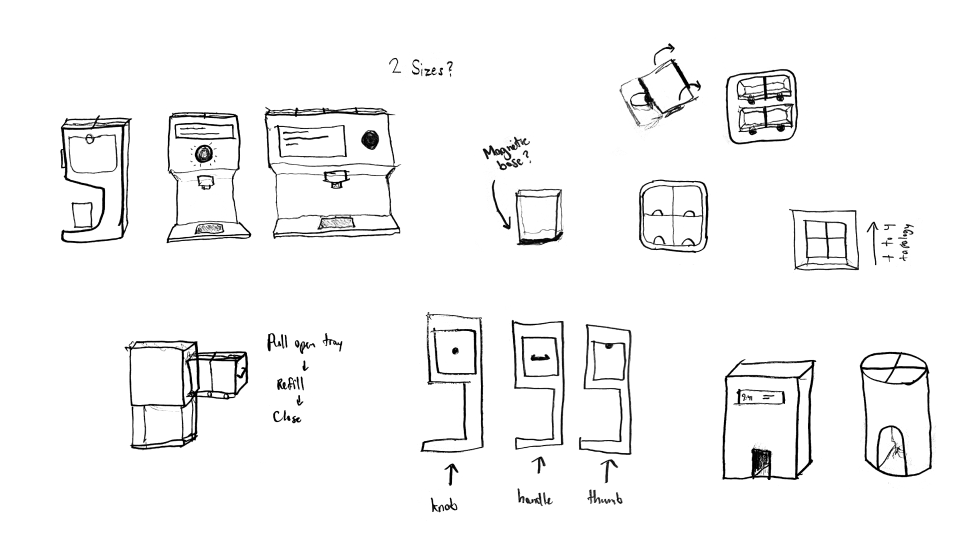
The idea is simple. Older adults—or their caregivers—would slide open a tray and fill each medication slot, quickly setting the dosage and schedule, like "2 pills, daily, at 8 pm".
When it's time for a dose, the device would notify the user audibly (a crescendo, much like progressive alarm clocks) or via another notification method (mobile push notification, existing smartwatch, etc.)
Design and Development
For higher fidelity design exploration I turned to 3D modelling, a skill I picked up during the pandemic. Designing visually is just as important as designing conceptually, and since I already settled on ideas from my sketches, it was time to create.
Branding was a fun part of this. I've always loved clever product names; so after some quick research into pop culture, language, idioms, and even historical figures, I settled on mythology.
Apollo: Greek Olympian deity; God of healing and medicine.
In the development of a high fidelity model, I decided on two sizes: Apollo and Apollo Plus, featuring 4-slot and 8-slot variations, respectively
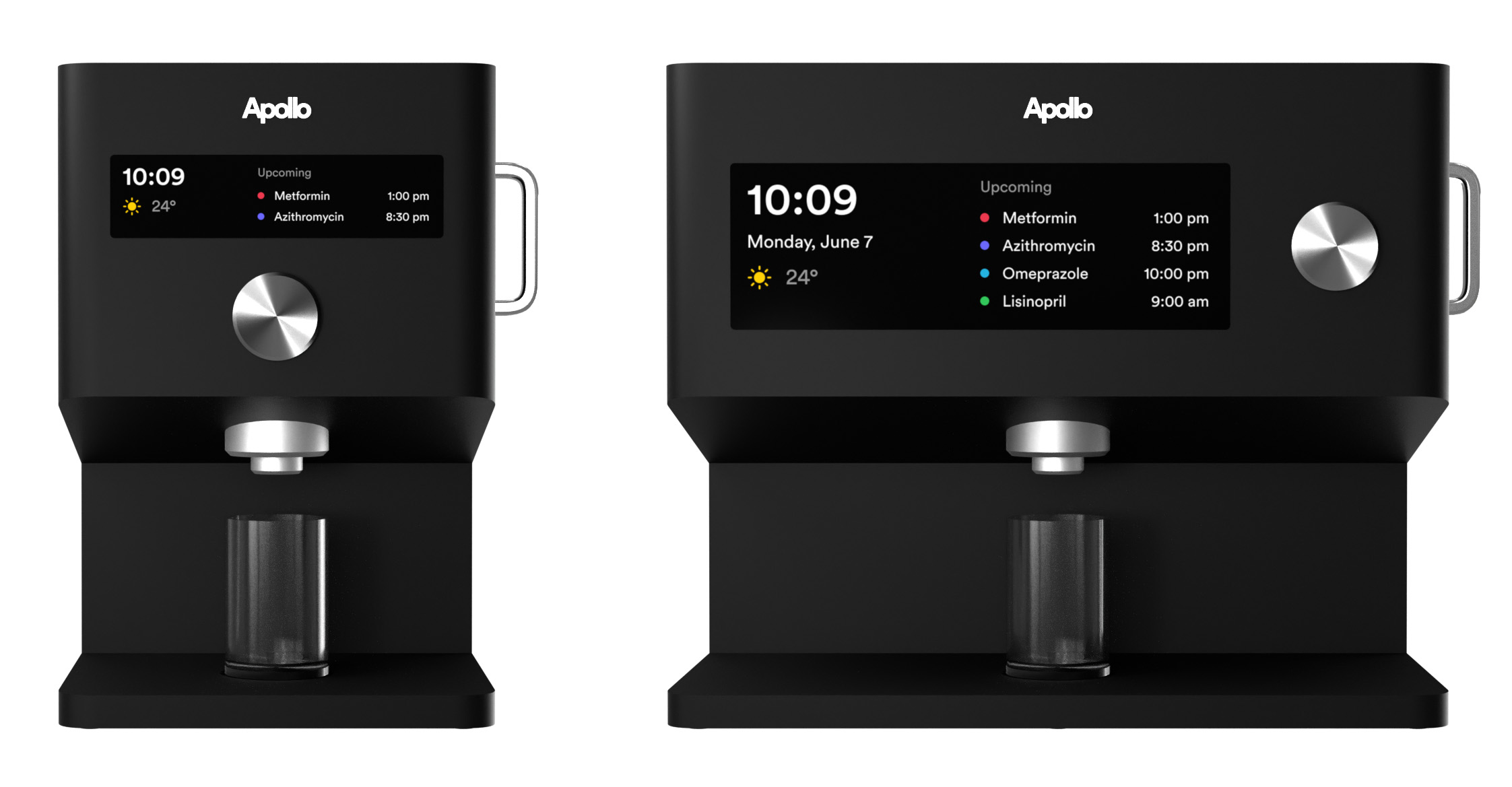
Easy as 1, 2, 3
Since these devices interface with just a single button, setting schedules and dosages can easily be managed in a companion app, paired and connected with a user's Apollo device.
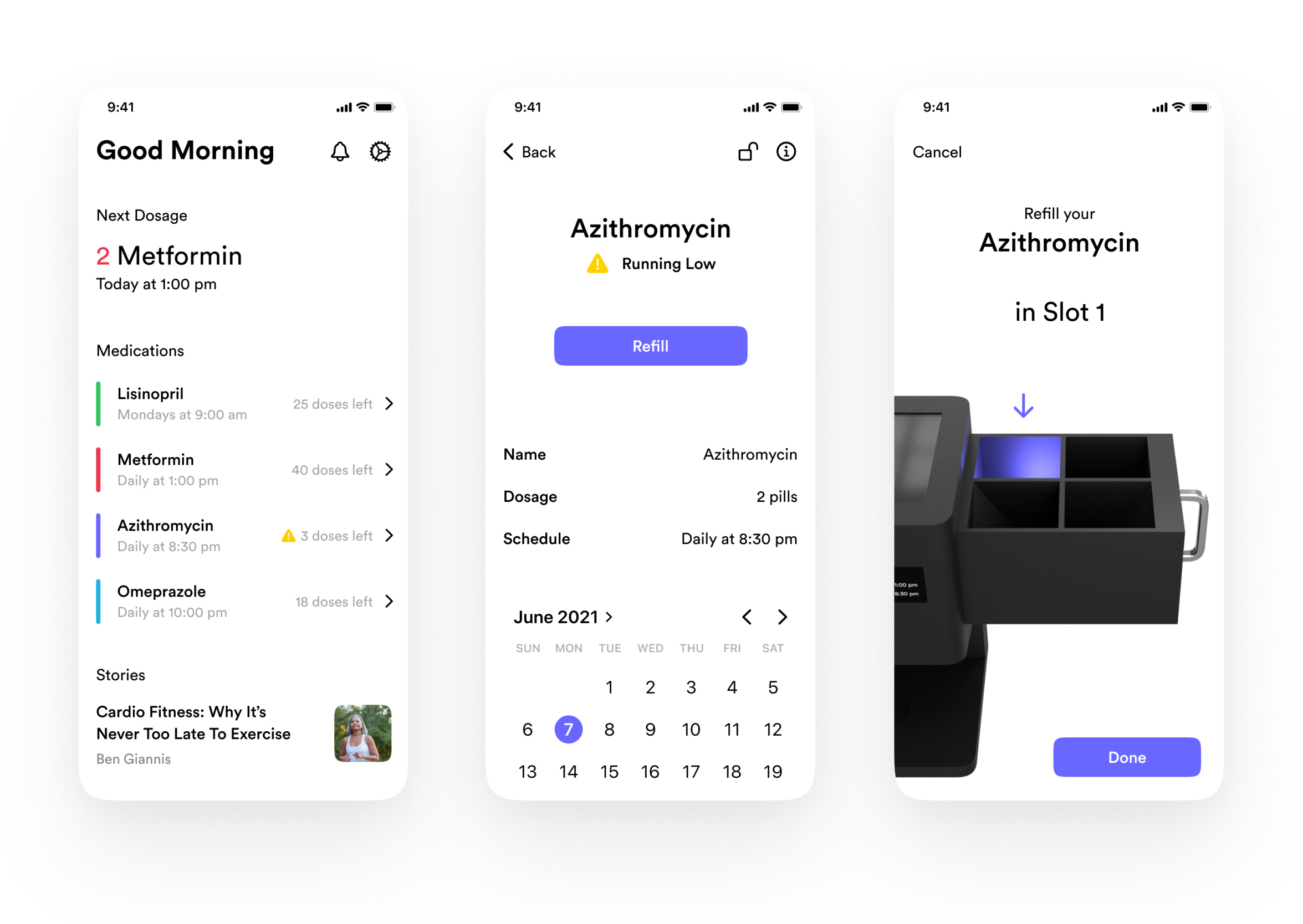
The app is built on UX best practices, using clear and understandable language. If the primary user is unable to set up their medications themselves, a caregiver or family member can help, much like existing solutions.
The product's display also adapts to show the most important relevant information. On standby, it shows the user's upcoming medications at a glance. When active, only the most important information is visible, allowing the user to focus on taking their correct dosage

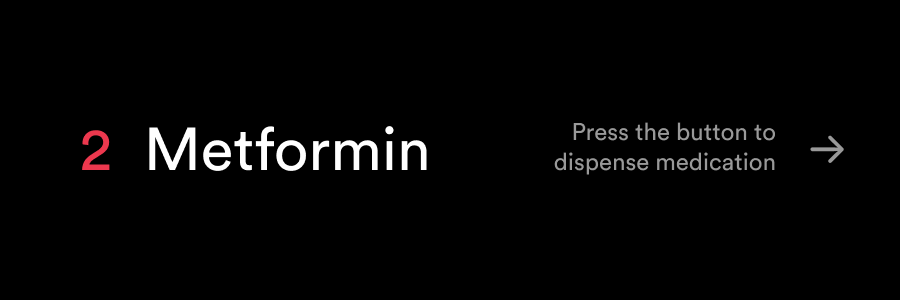
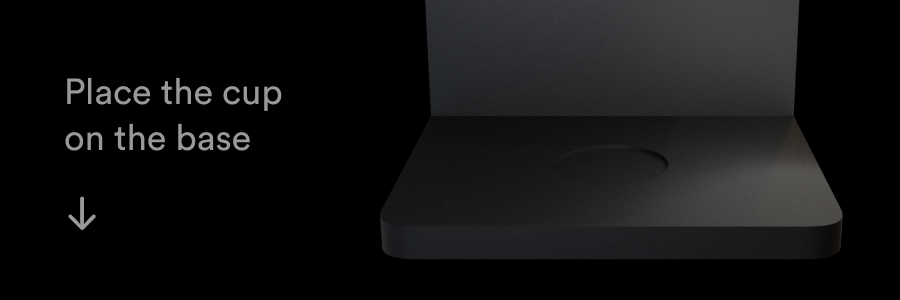
These smart machines feature design affordances that make interaction natural and intuitive:
- Transparent top for a quick peek at the tray
- Single anisotropic button to guide the user’s finger
- Magnetic cup for snapping to precise alignment
- Slot indication light when refilling
- Vertical tray handle to match natural hand position
Research in psychology, design standards, and ergonomics was conducted for each one of these features. Apollo is a product designed around human intuition.
The Final Product
Design is best expressed when applied to real-world issues. More specifically, product design should fade into the background: allowing the user to complete a task with as little friction as possible.
If the complexity of current medication management solutions is the problem, Apollo is the solution. A physical complement to the intricacy of human behaviour, this product solves an issue that affects so many people every single day of their lives.
This device could greatly improve the way that many handle medication management, paving a new path towards a future that is truly user-focused.
